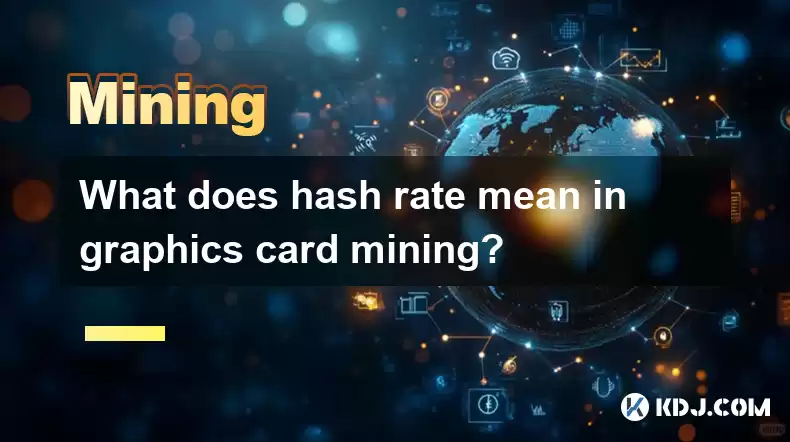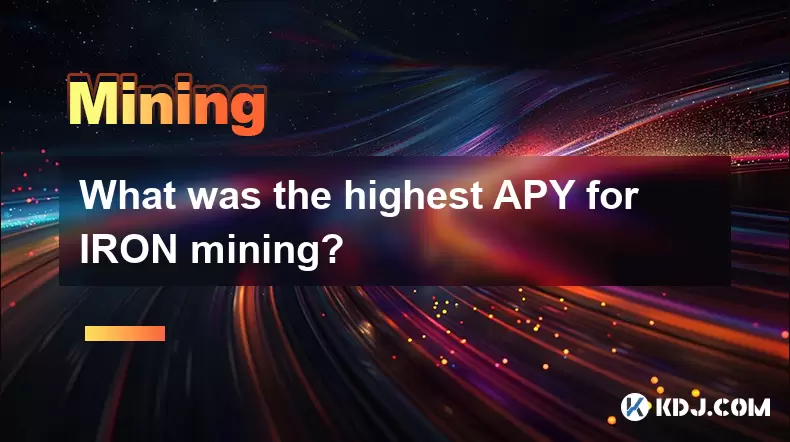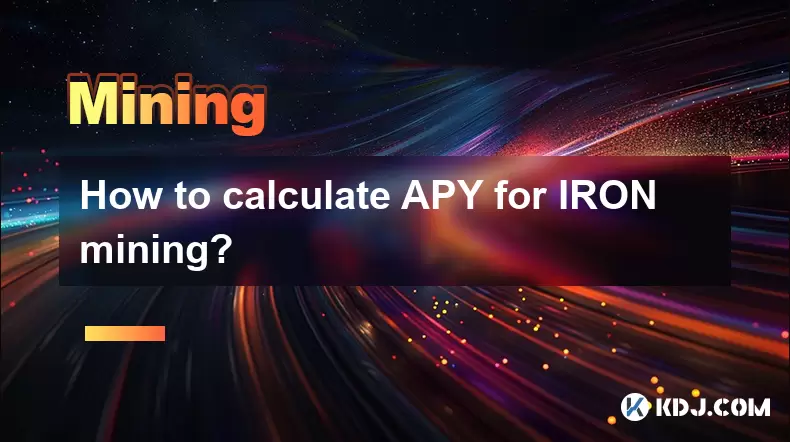-
 Bitcoin
Bitcoin $118300
-0.58% -
 Ethereum
Ethereum $3825
0.11% -
 XRP
XRP $3.137
-0.71% -
 Tether USDt
Tether USDt $0.9999
-0.01% -
 BNB
BNB $803.9
-3.37% -
 Solana
Solana $181.5
-1.94% -
 USDC
USDC $0.9999
0.01% -
 Dogecoin
Dogecoin $0.2238
-2.51% -
 TRON
TRON $0.3358
2.12% -
 Cardano
Cardano $0.7844
-2.16% -
 Hyperliquid
Hyperliquid $43.31
-1.48% -
 Sui
Sui $3.807
-4.04% -
 Stellar
Stellar $0.4203
-1.96% -
 Chainlink
Chainlink $17.79
-3.00% -
 Bitcoin Cash
Bitcoin Cash $567.8
-1.34% -
 Hedera
Hedera $0.2614
-4.30% -
 Avalanche
Avalanche $24.19
-4.46% -
 Litecoin
Litecoin $109.2
-0.74% -
 UNUS SED LEO
UNUS SED LEO $8.969
-0.01% -
 Toncoin
Toncoin $3.404
3.97% -
 Ethena USDe
Ethena USDe $1.001
-0.01% -
 Shiba Inu
Shiba Inu $0.00001307
-3.19% -
 Uniswap
Uniswap $10.33
-1.23% -
 Polkadot
Polkadot $3.884
-4.06% -
 Monero
Monero $312.9
-1.87% -
 Dai
Dai $1.000
0.01% -
 Bitget Token
Bitget Token $4.537
-2.24% -
 Pepe
Pepe $0.00001156
-3.40% -
 Cronos
Cronos $0.1437
-0.89% -
 Aave
Aave $282.8
-2.77%
What does hash rate mean in graphics card mining?
Hash rate measures a GPU's speed in performing hash functions crucial for mining cryptocurrencies, directly impacting a miner's potential profitability.
Apr 21, 2025 at 05:21 pm

Hash rate, often referred to as hash power, is a critical metric in the world of cryptocurrency mining, particularly when it comes to graphics card (GPU) mining. In simple terms, hash rate measures the speed at which a GPU can perform hash functions, which are essential for solving the cryptographic puzzles required to mine cryptocurrencies like Bitcoin, Ethereum, and others. This article will delve into the specifics of hash rate in GPU mining, explaining its importance, how it's measured, and factors that affect it.
Understanding Hash Rate
The hash rate is essentially the number of hash operations a GPU can perform per second. These operations are crucial because they are used to validate transactions and add them to the blockchain. A higher hash rate means a GPU can attempt more solutions per second, increasing the chances of successfully mining a block and earning the associated rewards. Hash rate is typically measured in units such as hashes per second (H/s), kilohashes per second (KH/s), megahashes per second (MH/s), gigahashes per second (GH/s), and terahashes per second (TH/s).
Importance of Hash Rate in GPU Mining
In the context of GPU mining, hash rate is a key determinant of a miner's potential profitability. A GPU with a higher hash rate can process more transactions and solve more cryptographic puzzles in a given time frame, which directly correlates with the miner's ability to earn more cryptocurrency. Miners often compare the hash rates of different GPUs to determine which ones offer the best performance for their mining operations.
Measuring Hash Rate
To measure the hash rate of a GPU, miners use specialized software that can run on their mining rigs. Some popular mining software includes NiceHash, CGMiner, and EthMiner. Here's a step-by-step guide on how to measure the hash rate using NiceHash:
- Download and install NiceHash Miner from the official website.
- Launch the NiceHash Miner application and select the cryptocurrency you want to mine.
- Configure your mining settings, such as the pool you want to connect to and any other necessary parameters.
- Start the mining process. NiceHash will begin to display real-time data, including the hash rate of your GPU.
- Monitor the hash rate displayed in the NiceHash interface to understand your GPU's performance.
Factors Affecting Hash Rate
Several factors can influence the hash rate of a GPU in mining operations. The most significant factor is the GPU model itself, as different models have varying levels of computational power. For instance, high-end GPUs like the NVIDIA RTX 3080 or AMD Radeon RX 6800 XT typically offer higher hash rates compared to lower-end models.
Overclocking is another factor that can affect hash rate. By increasing the clock speed of the GPU, miners can potentially boost the hash rate, though this comes with increased power consumption and heat generation, which can affect the longevity of the GPU.
The mining software and algorithm used also play a role. Different algorithms have different computational requirements, and some GPUs may perform better with certain algorithms than others. For example, a GPU might have a higher hash rate when mining Ethereum (using the Ethash algorithm) compared to mining Bitcoin (using the SHA-256 algorithm).
Cooling and ambient temperature are additional factors to consider. A GPU that is properly cooled can maintain a higher hash rate over time, as overheating can cause the GPU to throttle its performance to prevent damage.
Optimizing Hash Rate
To optimize the hash rate of a GPU for mining, miners can take several steps. Ensuring proper cooling is crucial, as a well-cooled GPU can maintain higher performance levels. This can be achieved through the use of high-quality cooling solutions, such as aftermarket GPU coolers or liquid cooling systems.
Tuning the GPU's settings can also help. This includes adjusting the core clock speed and memory clock speed to find the optimal balance between performance and stability. Miners can use software like MSI Afterburner to overclock their GPUs safely.
Choosing the right mining software is another important aspect. Different software can offer varying levels of optimization for different GPUs and algorithms. Experimenting with different software can help miners find the best solution for their specific setup.
Regular maintenance of the mining rig is also essential. Dust and debris can accumulate on the GPU and other components, leading to reduced performance and increased temperatures. Cleaning the rig regularly can help maintain optimal hash rates.
Hash Rate and Mining Pools
When mining in a pool, the hash rate of an individual GPU contributes to the overall hash rate of the pool. Mining pools combine the hash power of multiple miners to increase the chances of solving a block and earning rewards. The rewards are then distributed among the pool members based on their contribution to the pool's total hash rate. Understanding the hash rate of your GPU is crucial when deciding which mining pool to join, as it affects your potential earnings.
Frequently Asked Questions
Q: Can hash rate be improved without overclocking?
A: Yes, hash rate can be improved without overclocking by ensuring proper cooling, using optimized mining software, and maintaining the mining rig regularly. These steps can help maintain or even slightly increase the hash rate without the risks associated with overclocking.
Q: How does hash rate affect the choice of cryptocurrency to mine?
A: Hash rate can significantly influence the choice of cryptocurrency to mine. Miners often choose cryptocurrencies that their GPUs can mine at a higher hash rate, as this increases their potential profitability. For example, a GPU that performs well with the Ethash algorithm might be better suited for mining Ethereum than Bitcoin.
Q: Is it possible to mine profitably with a low hash rate GPU?
A: While it is more challenging to mine profitably with a low hash rate GPU, it is not impossible. Joining a mining pool can help, as it allows miners to combine their hash power and increase their chances of earning rewards. Additionally, mining less competitive cryptocurrencies or those with lower difficulty levels can be more profitable for GPUs with lower hash rates.
Q: How often should I check my GPU's hash rate?
A: It's a good practice to check your GPU's hash rate regularly, ideally daily or at least weekly. This helps you monitor the performance of your mining rig and detect any issues early, such as a drop in hash rate due to overheating or hardware problems.
Disclaimer:info@kdj.com
The information provided is not trading advice. kdj.com does not assume any responsibility for any investments made based on the information provided in this article. Cryptocurrencies are highly volatile and it is highly recommended that you invest with caution after thorough research!
If you believe that the content used on this website infringes your copyright, please contact us immediately (info@kdj.com) and we will delete it promptly.
- Ozak AI Presale: Your Chance to Turn 1 ETH into 20? A Crypto Investment Deep Dive
- 2025-07-30 15:50:12
- IPO, Bitcoin, and Treasury: A New Era of Crypto Investment?
- 2025-07-30 14:30:12
- Bitcoin, Binance, and Whales: Decoding the Latest Market Moves
- 2025-07-30 14:50:12
- Bitcoin, Binance, and Whales: Decoding the $1.2B Shuffle
- 2025-07-30 16:10:12
- MultiBank Group's $MBG Token: Bridging TradFi and Web3 with LBank Listing
- 2025-07-30 16:10:12
- NFTs: Punks, Penguins, and the Market's Mosh Pit
- 2025-07-30 16:16:00
Related knowledge

What was the highest APY for IRON mining?
Jul 23,2025 at 05:14am
Understanding IRON Token and Its Mining MechanismThe IRON token is a stablecoin that operates within the Iron Finance ecosystem, primarily on blockcha...

What is impermanent loss in IRON pools?
Jul 23,2025 at 09:00am
Understanding Impermanent Loss in the Context of IRON PoolsImpermanent loss is a phenomenon that affects liquidity providers in decentralized finance ...

How to claim rewards from IRON mining?
Jul 23,2025 at 02:21pm
Understanding IRON Mining and Reward MechanismsIRON Finance operated as a decentralized finance (DeFi) protocol on the Polygon and Binance Smart Chain...

How to claim rewards from IRON mining?
Jul 29,2025 at 05:07am
Understanding IRON Mining and Reward MechanismIRON is a dual-token system designed to stabilize the value of a synthetic asset through a combination o...

IRON mining tutorial for beginners
Jul 27,2025 at 12:01am
What Is IRON and How Does It Work in the Cryptocurrency Ecosystem?IRON is a cryptocurrency token that operates on the Binance Smart Chain (BSC) and is...

How to calculate APY for IRON mining?
Jul 28,2025 at 09:49am
Understanding APY in the Context of IRON Token MiningWhen engaging in IRON token mining within decentralized finance (DeFi) platforms, Annual Percenta...

What was the highest APY for IRON mining?
Jul 23,2025 at 05:14am
Understanding IRON Token and Its Mining MechanismThe IRON token is a stablecoin that operates within the Iron Finance ecosystem, primarily on blockcha...

What is impermanent loss in IRON pools?
Jul 23,2025 at 09:00am
Understanding Impermanent Loss in the Context of IRON PoolsImpermanent loss is a phenomenon that affects liquidity providers in decentralized finance ...

How to claim rewards from IRON mining?
Jul 23,2025 at 02:21pm
Understanding IRON Mining and Reward MechanismsIRON Finance operated as a decentralized finance (DeFi) protocol on the Polygon and Binance Smart Chain...

How to claim rewards from IRON mining?
Jul 29,2025 at 05:07am
Understanding IRON Mining and Reward MechanismIRON is a dual-token system designed to stabilize the value of a synthetic asset through a combination o...

IRON mining tutorial for beginners
Jul 27,2025 at 12:01am
What Is IRON and How Does It Work in the Cryptocurrency Ecosystem?IRON is a cryptocurrency token that operates on the Binance Smart Chain (BSC) and is...

How to calculate APY for IRON mining?
Jul 28,2025 at 09:49am
Understanding APY in the Context of IRON Token MiningWhen engaging in IRON token mining within decentralized finance (DeFi) platforms, Annual Percenta...
See all articles

























































































